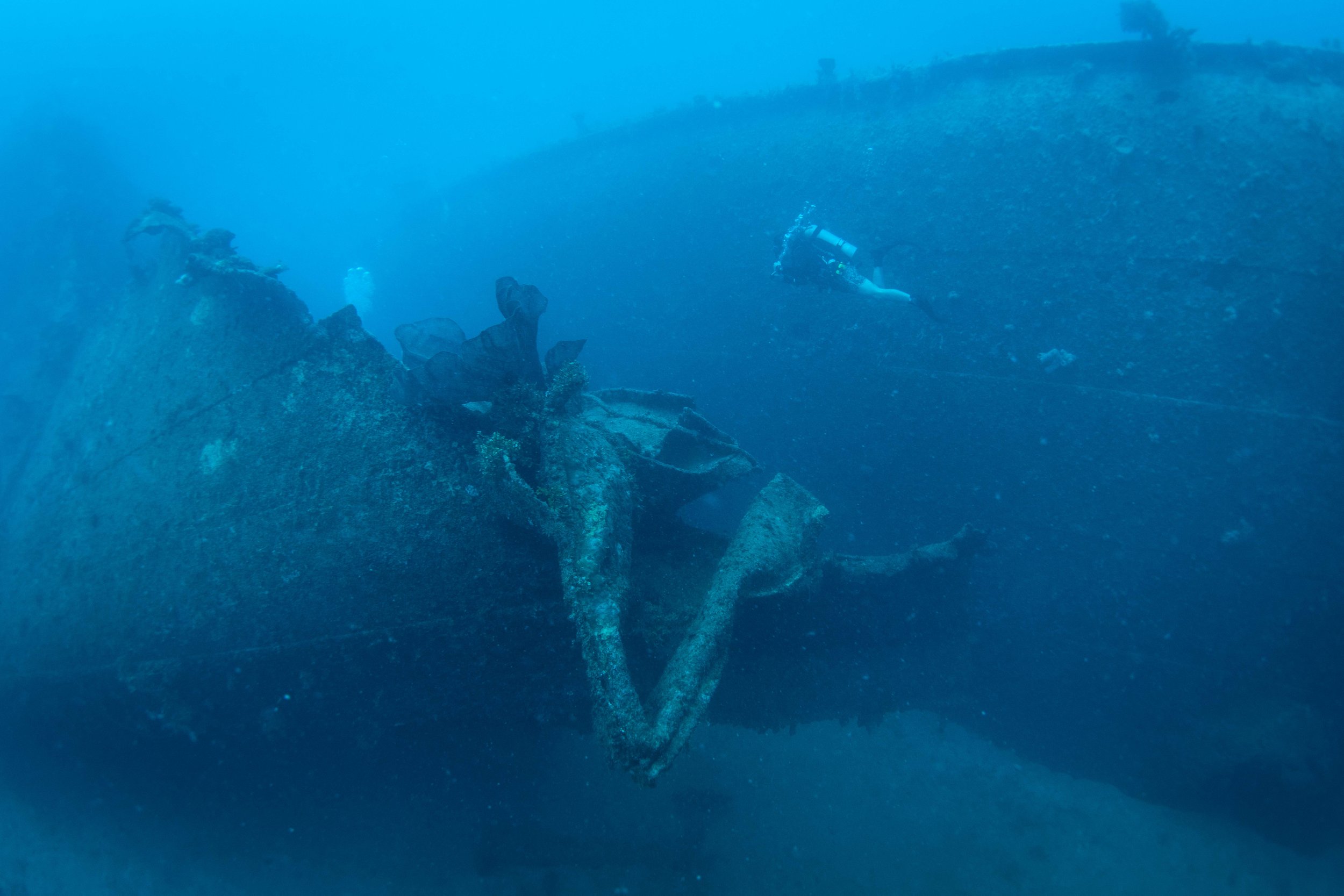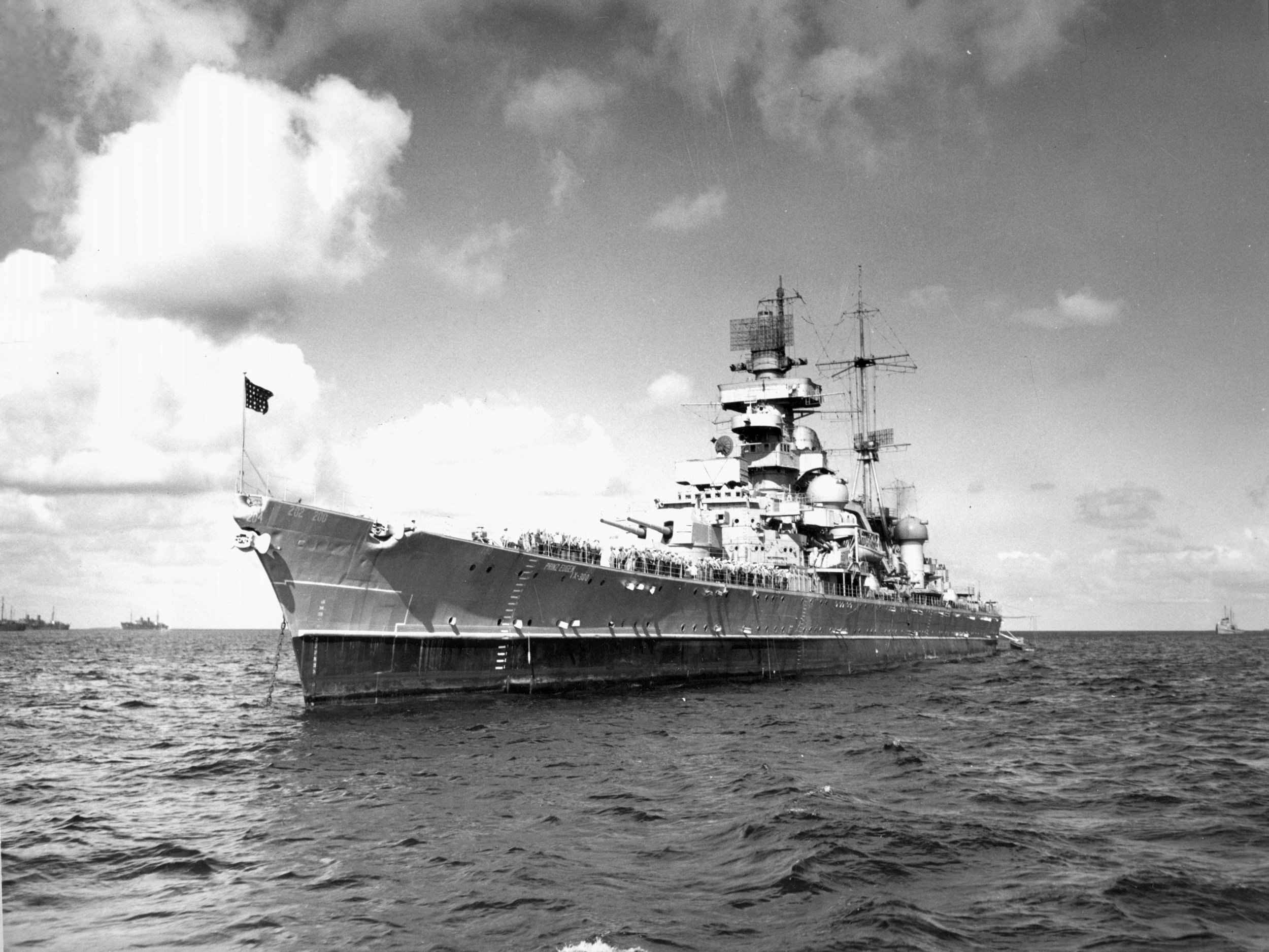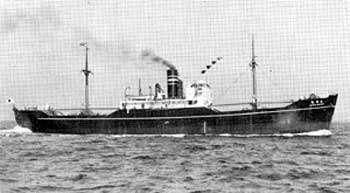
WWII Wrecks
Asakaze Maru (K-5 Up)
The Asakaze Maru, (usually called K-5 Upright because it is close to Coast Guard buoy K-5 and it sits upright), is a popular wreck very close to Kwajalein Harbor. The ship was sunk December 3, 1943 likely because of being hit by three 1,000lb bombs. It was reported to have sunk in less than five hours. The damage from the bombs can be easily seen underwater as the entire superstructure lay in a heap of destroyed metal.
Ship structure is well intact with a photogenic 3-inch bow gun on a turret and a machine gun on the starboard side of the wheelhouse. Popular artifacts to see in the holds include sake bottles and the outer section of a small car. Nurse sharks are often seen resting on the top deck and eagle rays frequently swim past divers. The ship is 424ft long with a 57ft beam. Shallowest point is around 60ft, the top deck sits at about 100ft with a max depth of 150ft.
Choko Maru (Barracuda Junction)
Hit by bombs dropped from US Aircraft on December 4, 1943 the Choku Maru caught fire and eventually sank on December 5. This ship is an excellent dive and the ship is quite intact. A 3-inch bow deck gun on a platform points towards the surface and two big kingposts extend from the ship that are covered in marine life. The stern has bomb damage but the propeller is intact. One hold is filled with large cement pipes which can be seen almost spilling out. Turtles and eagle rays are common visitors and the stern has bomb damage. Lionfish are common around the stern and bushes of black coral sometimes reveal a rare sighting of a longnose hawkfish.
Generally, once you name something after an animal you rarely see it, but barracuda used to frequent the ship. The ship is 340ft foot long and sits on it’s port side from about 90ft to 145ft in the sand.
Akibasan Maru (P-buoy)
One of the favorite wrecks in the lagoon, the Akibasan Maru, arrived in Kwajalein just two days before Operation Flintlock from Truk Lagoon. She received three direct hits from a single engine airplane and was reported to have sunk in less than five minutes. Today the ship sits upright with the shallowest point being kingposts around 50ft and she sits about 150ft in the sand. The main deck is around 100ft. Batfish are curious and common on the wreck and often follow divers around. Schools of baraccuda are sometimes seen and the kingposts have hard and soft coral growing on them. The ship is 389ft long with a 50ft beam. The smoke stack has an anemone and has the insignia markings of Mitsui Bussan Kaisha, the ship’s merchant owner. In hold number 2 there are seaplane wings and pontoons with kanji characters, previously thought to be meant for Mavis seaplanes, although they were recently shown to actually be for E14Y1 Glen floatplanes. They are the only known Glen planes still in existence. Other holds contain Japanese beer bottles, sake bottles and shoe soles. The bow gun is missing but the platform is there.
Tateyama Maru (K-5 Side)
Another popular wreck is the Tateyama Maru because of to it’s close proximity to the Small Boat Marina and it’s easy to find surface buoy next to Coast Guard marker buoy K-5. This 340ft long ship sits on its starboard side at about 140ft in the sand. The shallowest point of the hull is around 90ft. Kingposts with lots of coral jet out to the side and anemones can be seen with cleaner shrimp within. Schools of trevally are a common sight, as are friendly batfish. The sponge covering a lot of this ship is bright red when you put a light to it and the hull is covered in huge purple elephant ear sponges that are often shading sleeping green sea turtles. The ship was likely a converted water carrier bringing supplies to Kwajalein and was probably sunk by one or more 1,000lb bombs.
Shoei Maru (O-Buoy)
The Shoei Maru (or possibly Syoei or Shoyei) was sunk by a U.S. Navy PBY “Catalina” that performed a glide bombing attack on 19 December 1943. The ship caught fire and sank a few hours later, coming to rest upside down in 135-140ft. Next to the ship is a F1M2 Pete which may have been on the deck of the plane when it sank. The stern has twisted and is completely detached from the ship and sits along side it about 30ft away. Around the wreck are mines, torpedoes, aircraft bombs, and artillery shells. Because it is upside down, this is a pretty deep dive with limited bottom time. The shallowest part of the wreck is around 90ft.
Mitsubishi F1M Pete Floatplane
Along side the Shoei Maru (O-buoy) is a body of a “Pete” floatplane. It’s believed the plane was on the deck of the ship and the wings are detached and have not been found. The Pete was a reconnaissance floatplane with a max speed of 230mph and had a maximum operating range of 670 miles.
Length: 31ft 2in Wingspan: 36ft 1in Height: 13ft 1in Max Speed: 230mph Range: 670mi Crew: 2
Aichi E13A Jake Seaplane
The Jake was a long-range reconnaissance seaplane one of which was used as a scout for the Attack on Pearl Harbor. It was used for patrols, transports, rescues, strikes, and even some kamikaze mission near the end of the war. There are at least two Jake planes near Ebeye. One is fairly intact with an unknown history. It is a deep dive and nears the 130ft limits of Kwajalein recreational limits.
Length: 37ft 1in Wingspan: 47ft 7in Height: 24ft 3in Max Speed: 234mph Range: 1,298mi Crew: 3
Kawanishi H6K Mavis Flying Boat
There are parts of at least three different Mavis planes near Ebeye. Numbers 1 and 2 are around 70ft deep. This long-range flying boat was used for maritime patrol duties.
Length: 84ft 1in Wingspan: 131ft 3in Height: 20ft 7in Max Speed: 210mph Range: 2,981mi Crew: 9
Prinz Eugen
The Prinz Eugen was a German Hipper-class cruiser that served as part of the Nazi Kriegsmarine during WWII. It look part in Operation Rheinubung in May 1941 with the Bismark, sinking the battle cruiser Hood. At the end of the war it was turned over to the British and then given to the USA as a war prize. It was decided the ship would be part of the target fleet for Operation Crossroads, the testing of nuclear weapons at Bikini Atoll. The ship survived the Able and Baker tests but was contaminated with radiation. It was towed to Kwajalein where it sprung a leak and while trying to tow it oceanside to be scuttled it ran aground next to Enubuj Island (Carlson). It continued to take on water and eventually capsized almost totally upside down. At low tide the propellers are out of the water and the bow rests at about 130ft.
This ship is an incredible dive with plenty to see, even though it is upside down. Divers can see into a storage room with stacked torpedoes and peak into port hole windows. In 2018 leaking oil was removed by the US Navy. The ship is 692ft long with a 71.2ft beam. It carried 830 crew.
Palawan
One of the most photogenic wreck in the lagoon, the Palawan is a popular wreck close to Bigej pass. The movement of water in and out of Bigej pass probably contributes to the spectacular visibility often seen at this wreck. Not much is known about this wreck other than it was possibly a Philippine fishing boat that was requisitioned into the Imperial Japanese Navy. A ship was noted to have been sunk in this area, but divers didn’t find it until the 90s. It is deeper with the top deck around 110ft. It is almost 160ft in the sand. The stern wheel is where everyone has their photo taken.
The forward mast was broken, most likely due to a buoy attached for b-boats. It lays across the wreck. There is a large smoke stack and most of the stern was probably wood that has rotted away, leaving behind only the structural beams. The bow mast is still upright and has a large black coral bush and often rare longnose hawkfish.
Martin PBM Mariner
The PBM was a patrol bomber and world's largest twin-engine flying boat. It was hailed for its range, bomb load, ruggedness, and seaworthiness. There are three PBMs in the southern lagoon, but unfortunately they are all deep. There is only one you can visit within recreational dive limits.
Length: 79ft 10in Wingspan: 118ft Height: 27ft 6in Max Speed: 205mph Range: 2,600mi Crew: 7
Dia-san Maru
(Fumi Maru No. 3)
This smaller ship, about 130ft long, is a lovely dive. Mostly intact, although sitting at a slight port list, she sits in the sand at about 145ft with the shallowest point being about 110ft. It was likely a sub chaser, possibly converted from a whaler, and it was sank on January 30th, 1944.
There is lots to see and photograph including a nice bow gun pointing aft with ammunition in a box under it, a big funnel with bright red sponge, black coral and marine growth. The sky lights to the engine room are easily seen. Sometimes this ship is thick with small silverside fish.
Phantom Maru
This is another deeper wreck with the top deck being around 120ft and probably 145ft in the sand. Identity of the wreck is unknown and it got it’s name because divers kept finding it and loosing it. There is major damage to the bow, which is likely how it sank. A mounted machine gun on the bow has previously been reported, but now you only see the platform, the gun has possibly fallen off into the rubble. A box forward of the platform may have held ammunition. The bridge was likely mostly wood, which has rotted away, leaving big open spaces and a lot of fish living within. It has colorful sponges and coral growth. The ship’s design is similar to the Ski Area Wreck and the Huff Maru.
Ikuta Maru (P-North)
The Ikuta Maru was a 2,968-ton freighter converted auxiliary gunboat that was hit by bombs on January 12, 1944 from PB4Ys, causing it to sink. It sits on it’s port side with the bow of the ship being in the sand at 180ft, but the seafloor sloping upwards to 150ft for the aft. The stern was completely blown off and lies some distance behind the rest of the ship. There are several big guns on either side of the bridge and a machine gun on top of the bridge. Most of the dive will be spent around 130ft.
Ski Boat Wrecks
Referred to as the “SkiBoat Wreck” and the “SkiBoat LCM”. The first one is a Japanese patrol boat sitting in about 45 ft of water to the sand. It is approximately at a heading of 290 degrees from the bottom of the stairs. The boat name or how it sunk is unknown but it is a great first wreck dive even for new divers. Offering multiple wonderful things to see for both wreck and reef divers. The second wreck is an United States LCM that while moored was washed ashore during a bad storm. This one is easily accessed by snorkelers and can be located by following the drop-off south where you can see a pole with a buoy sticking out of the water that marks the top of the wreck. This sits in no more than 22ft of water to the sand, it is an easy snorkel.
Huff Maru
The Huff Maru has an unknown history but may have been a patrol boat or a modified trawler/whaler. It sits about 120ft at the bottom with the deck being around 100ft. It is off South Shell Island. There is a large hole on the starboard side of the ship close to the stern which may be the cause of it sinking (which is also interesting that the metal curls outward, suggestion the blast came from inside). The wooden bridge has rotted away but the structural beams still make it apparent. In the past this has been a popular place to see mantas and there is possibly a manta cleaning station nearby.



























